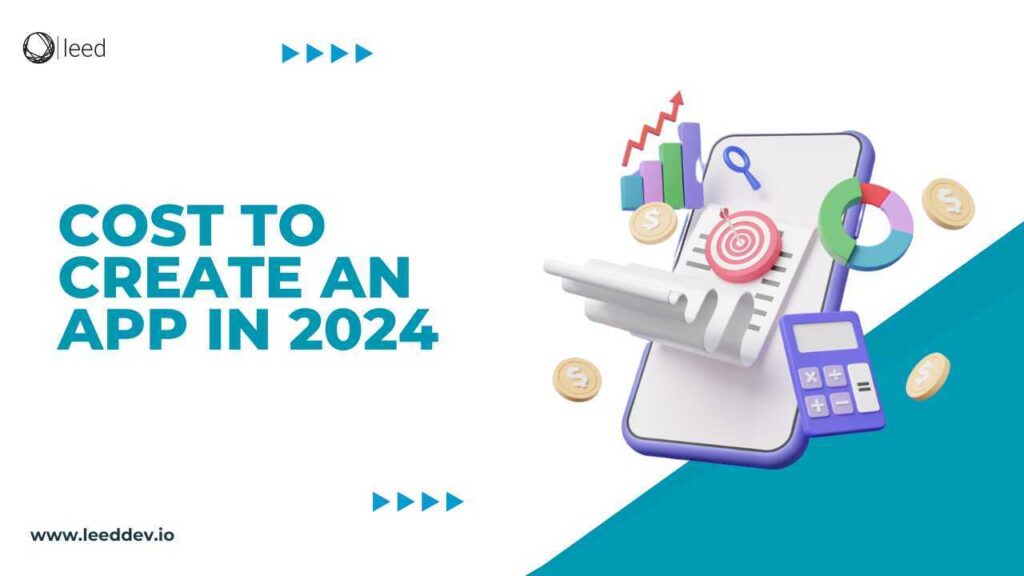When you talk about business its all about money and profit & lost you make. Right? If you are a software development company then you need to be sure that your apps are working fine. Measure mobile app performance metrics has become very important.
Next step after you have developed a mobile app? Well naturally it would be that your app is liked by your customers and it generates more revenue. That is the goal of any organization. But there must be a way to measure whether your app is successful or not. This is where you have to measure Key Performance Indicators (KPIs) to measure mobile app performance.
What Are Mobile Application Performance Monitoring?
Mobile App metrics are basically a gauge for app developers that can measure the performance and success of an application. It tells whether the application is working fine and is popular among the target audience or not. These metrics are used to evaluate how well an app is working. By measuring mobile app performance metrics businesses can make informed decisions. It’s also easy to identify areas of improvement and work on them for better results. Some of the common mobile app metrics include:
- App Load Time
- Battery UsageNetwork Usage
- Average revenue per user (ARPU)
- Response Time
- Crash Rate
- User Engagement
- App Store Rating Conversion Rate
- User Retention
- App Size
These are some of the metrics that can tell you about the performance of your app. By closely monitoring and checking the KPIS, measuring mobile app performance is easy. The metrics will give you useful and powerful insights to improve your applications.
Read Also: Optimize Your App Performance With Core App Dashboard
Top 10 KPIs For Measuring Mobile Application Performance
Some of the most important KPIs to measure Mobile App Performance are as follows:
Retention Rate
Retention rate is an important KPI that can be defined as the number of clients that come back after a certain time. It’s the percentage of clients that returns to use the app after the initial download or installation of the app. Retention rate is important for the success of an app as for engaging the app users have to use it. To simplify the concept, the higher the retention rate is, the higher is the chance of earning revenue from the app.
The formula for retention app is as follows:
Retention Rate = ((CE – CN) / CS)) * 100
CS = No. of customers at the start of the period
CE = No. of customers at the end of the period
CN = No. of new customers acquired during this period
Mobile Downloads
Mobile downloads are the most easy way to track users’ activity. It refers to the number of times an app has been downloaded on a mobile device. Mobile downloads can be tracked through different stores like Apple or google play stores. This will help the organization make informed decisions and helps identify trends and patterns that can be helpful for companies success
User Growth Rate
User growth rate can be defined as the rate at which the users are increasing over a specified period of time. You need to know which factors are affecting the users. Which points are positive that are increasing the user and gaining customers attention. Similarly you need to consider the points that can make the users lose interest. Like for example how the price is affecting the users. The upgrades are gaining users’ attention or not. If the user growth rate is high then it indicates that your app is gaining users attraction and vice versa.
The formula for User Growth Rate is as follows:
((Present User Amount – Past User Amount) / (Past User Amount)) * 100
Crashes
Crashes are a major issue that is a hurdle in the success of any organization. If a user downloads the app and it crashes, it will have a negative impact. And most likely he will not download the app again. So an organization needs to check the number of crashes an app is having. By keeping the track of crashes, it’s easy to identify the issues. Developers can make improvements in certain areas that will reduce crashes. The lower the total number of crashes the better it is for the company.
Daily Active Users (DAUs)
This is another metric that is important for measuring mobile app performance. DAU is a key performance indicator that measures the ability to retain and attract users on a daily basis. By knowing how many users are using your app can help you gain useful insights. Knowing about the user experience and knowing the number session users use an app can help you know about users interests.
Higher number of daily active users help to generate more revenue. Daily Active Users will help you identify the trends in user behavior. You can also evaluate the success or failure of your app.
Customer Lifetime Value (CLV)
Downloading the app is only the basics. The battle is not completed. Half of the work is remaining. You need to pursue your users to subscribe to your app as well. Customer Lifetime Value is a metric that estimates the total value a customer will bring to a business. The greater the Customer Lifetime Value the better it will be for the business. It provides more specific information about a customers value
The formula to calculate Customer Lifetime Value is as follows:
CLV = Average Revenue Per Customer * (Customer Lifespan or Average Retention Time)
Churn Rate
Churn rate is another important factor that needs to be considered while measuring mobile app performance. To simply explain churn rate can be defined as the percentage of clients that stop using your app or uninstall your app. Keeping a track of churn rate is important. It tells you how much users are still using the app. Also a high churn rate indicates that there are functionality issues in the app. That is the reason users have stopped using the apps. A higher churn rate negatively affects the company.
The formula to calculate Churn Rate is as follows:
(No. of customers lost during a time period / Total No. of customers at the beginning of the time period) x 100
Session length
Mobile app performance and other matrices are session length. It can be defined as the time a user opens and spends on an app. The more time the user spends on the app the bounce rate low and it is better. If a user spends a reasonable amount of time on an app then it indicates that the user is engaged and is showing interest. To measure the session length, developers can check the time elapsed when a user opens a app or when he closes it.
Customer Acquisition Cost
Customer Acquisition Cost can be defined as the total expense incurred to acquire new customers for a company. It demonstrates how much a business must spend to acquire them; it’s the fee they must pay to convince new customers to use their product or service. Furthermore, Customer Acquisition Cost measures profitability and assets when budget planning; additionally it evaluates marketing channels and campaigns.
Formula to calculate Customer Acquisition Cost is as follows:
(Number of user lost during a time period / Total number of user at the beginning of the time period) * 100
Average Screens Per Visit
Average Screens Per Visit is another metric that is important for measuring mobile app performance. It is a metric that measures the number of times a user visits a specific screen or a page. By analyzing these metrics users can identify the issues that may be causing the users to leave the site. An issue that can cause the users to leave your site is complicated navigation or also interesting content.
(Total number of screens viewed during a specific period of time / Total number of sessions or visits during the same period)
Read Also: What is Meta App Manager & its Purpose
Conclusion
To conclude, measuring mobile app performance is necessary as it helps in continuous improvement. Organizations can also set and achieve specific goals. With the help of different KPIs it is easy to measure mobile app performance. These KPIs basically provide a framework that can help track the App progress. After identifying the issues and weaknesses there is more opportunity for improvement. So in simple terms by measuring and analyzing app performance. With the help of businesses can make data-driven decisions that lead to better performance and increased success.
Frequently Ask Questions (FAQs)
Q No.1 How do you evaluate mobile app performance?
Answer: Evaluating the performance of a mobile app involves assessing various aspects, some key factors to consider when evaluating mobile app performance are:
- Responsiveness
- Load Time
- Stability
- Battery and Memory Usage
- User Experience
- Compatibility
- Security
Q No.2 What is the mobile app KPI Metrics?
Answer: KPI stands for Key Performance Indicator, and it is a measurable value that demonstrates how effectively a company or organization is achieving its key objectives.
Q No.3 How to measure app quality?
Answer: To measure app quality, you can consider the following aspects:
- Evaluate whether the app performs its intended functions accurately and without errors.
- Assess the app’s ease of use, intuitiveness, and overall user satisfaction
- Measure the app’s speed, responsiveness, and efficiency.
- Ensure that the app works well across different devices, platforms (iOS, Android, etc.), and screen sizes.
- Conduct penetration testing to identify vulnerabilities.
- Measure the app’s stability by monitoring crashes, freezes, and unexpected behavior.
- Regularly update and maintain the app to address bugs, security vulnerabilities, and compatibility issues.
- Monitor user ratings and reviews on app stores to gauge user satisfaction and identify areas for improvement.
Q No.4 What is a good rating for a mobile app?
Answer: A good rating for a mobile app can vary depending on the app’s specific goals, industry, and competition. However, generally speaking, a rating of 4 stars or higher (out of 5) is considered good for a mobile app.
Q No.5 What is mobile app analytics?
Answer: Mobile app analytics refers to the collection, measurement, analysis, and interpretation of data related to user interactions and behaviors within a mobile app.
Q No.6 What are the success metrics of Mobile apps?
Answer: The success metrics of mobile apps can vary depending on the app’s goals, industry, and specific objectives. However, here are some common success metrics that are often considered:
- User Acquisition
- User Retention
- Daily/Monthly Active Users (DAU/MAU)
- Session Length
- Conversion Rate
- Average Revenue Per User (ARPU)
- App Store Rankings
- Return on Investment (ROI)
Q No.7 How do I optimize my app performance?
Answer: To optimize your app performance, consider the following steps:
- Use performance monitoring tools and profiling techniques to identify areas of your app that are causing slowdowns or consuming excessive resources.
- Review your app’s codebase and look for opportunities to optimize performance.
- Ensure that your app manages memory efficiently.
- Optimize network requests to reduce latency and improve app responsiveness.
- Compress and optimize your app’s images, videos, and other media assets to reduce their size and improve loading times.
- Optimize background processing tasks to minimize battery drain and system resource consumption.
- Test your app on a variety of devices with different screen sizes, hardware configurations, and operating systems.
Q No.8 Why improve app performance?
Improving app performance is crucial for several reasons:
- User Experience
- User Retention
- Competitive Advantage
- App Store Rankings
- Conversion and Monetization
- User Acquisition and Marketing
- Cost Efficiency
- Platform Guidelines and Policies
Q No.9 What are the 5 recommendations for apps with better performance?
Answer: Here are five recommendations for improving app performance:
- Minimize unnecessary computations, optimize algorithms, and release resources when they are no longer needed.
- Use techniques like lazy loading, progressive loading, and asynchronous loading to prioritize display of critical content and improve perceived performance.
- Optimize network requests and reduce latency. Minimize the number of network calls by bundling or batch-processing requests.
- Optimize data storage and retrieval. Use efficient database queries, indexing, and caching strategies to ensure quick data access.
- Regularly monitor and analyze app performance using analytics tools, performance monitoring frameworks, and automated testing.
Q No.10 What makes an app high quality?
Several factors contribute to making an app high quality:
- Functionality
- User Experience (UX)
- Performance
- Design and Visual Appeal
- Stability and Reliability
- Security and Privacy
- Accessibility
- Regular Updates and Support
- Offline Functionality
- User Feedback and Continuous Improvement




